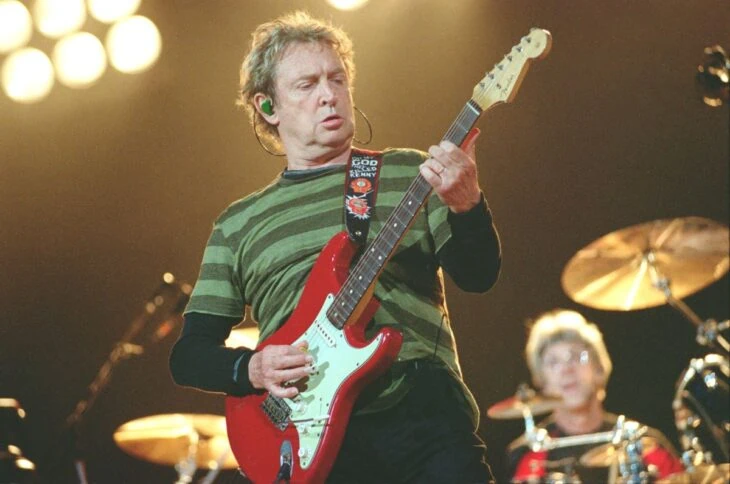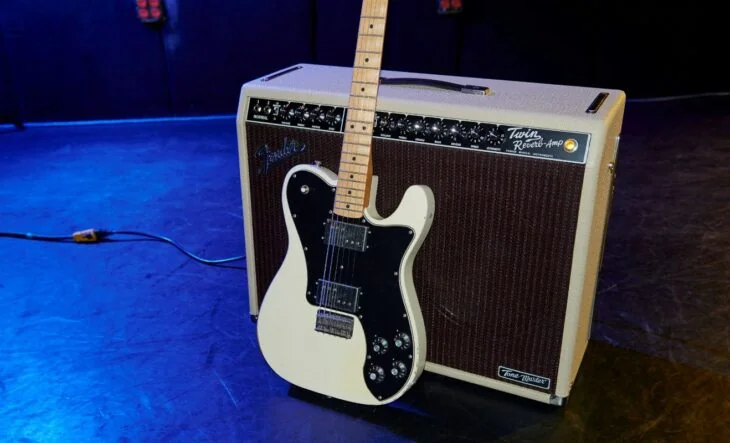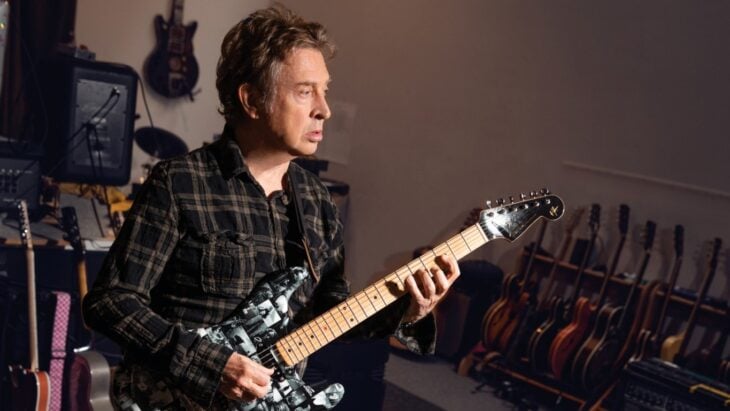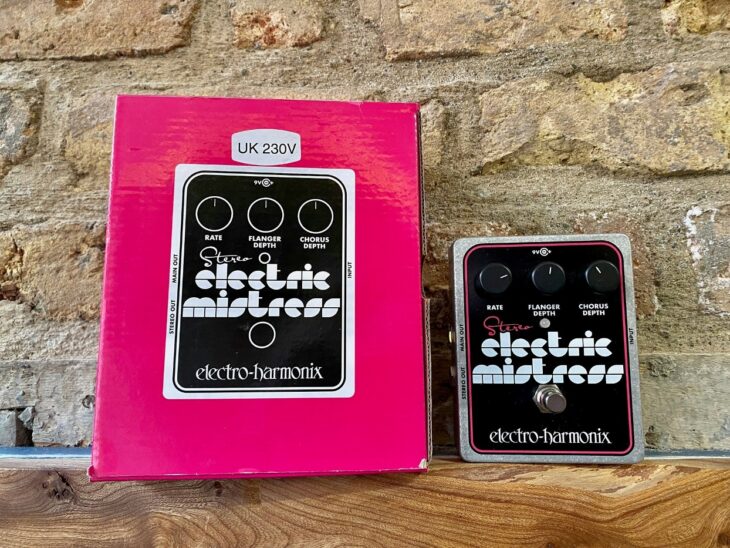Few guitar players can resist the beautiful chord voicings and sublime tones of The Police’s axeman, Andy Summers. At a time when most three-piece bands were trying to make their sound as big and blunt as possible, Summers opted for a far more restrained approach.
Armed with a Fender guitar, an extensive chord vocabulary, and tastefully chosen effects units, Andy Summers was able to carve out a unique guitar sound that countless players try to emulate to this day.
If you’re looking to play The Police’s music and lean into the unique sound of their iconic riffs, like “Every Breath You Take,” “Roxanne,” and “Message In A Bottle,” look no further than this article. I’ll take you through the key pieces of gear you need to evoke their classic sound.
Table of Contents
Andy Summers Guitars

The sound of an Andy Summers riff, to me, has always been a bright, chiming single-coil tone. It’s classic Fender all the way, occasionally offset by some surprising humbucker warmth.
It’s no surprise, then, that Andy Summers’ primary guitar throughout the Police’s peak years was a unique 1963 Fender Telecaster Custom. This guitar features two significant modifications to set it apart from a typical Tele. First, it has an onboard preamp. Second, it features a Gibson PAF in the neck position.
For this reason, I’d recommend playing a Telecaster Custom, ideally with a humbucker in the neck position. Although Andy Summers’ Tele is a 1963 model, humbuckers in the neck position became more common in Tele Customs in the 1970s.
The Vintage series of Telecasters is a great place to start for vintage-spec Fender instruments. The 77 Custom, for example, includes a Gibson-style humbucker in the neck position, and a standard Fender single coil in the bridge position.

If you’re looking to reduce your budget a little further, my recommendation would be the Squier Classic Vibe ’70s Tele Custom. This, too, features a humbucker in the neck position, and a single coil in the bridge.
However, just because a Fender guitar doesn’t have a humbucker does not mean you can’t use it for Police tones. Andy Summers was known to use a standard-configuration Stratocaster from time to time and even boasts a signature model Strat that would be great for accessing Police sounds.

Really, any Fender guitar will do, as long as you run it nice and clean, and don’t pick too hard. It’s most important that you can stretch to play Andy Summers’ extended chord voicings on the instrument, so it needs to be comfortable to play.
The Police Amps
Andy Summers tends to run his amplifiers as clean as possible, getting most of his tonal coloration from his choice of guitar pedals. Curiously, he frequently played a Marshall stack at low volume, appreciating the high treble and touch-sensitivity of a non-driven Marshall. It’s a sound that I often call “underdrive”: running a typically overdriven amp at low volume to avoid poweramp saturation.
Otherwise, Andy Summers appreciated the warm, neutral tones of a classic Fender Twin or the solid-state power of a Roland Jazz Chorus.
My main recommendation would be the Fender Bassbreaker combo. This amp was designed to encapsulate the features of a Fender Bassman and a Marshall Bluesbreaker. When you consider that these were the two main types of amplifier that Andy Summers played, this amp feels like an obvious choice.

The Bassbreaker is also far lighter (after all, it’s not called the Backbreaker) and more portable than a Fender Twin or a Marshall stack.
The Police Amp Settings
The Police tone is bright and present, with plenty of jangle and chime. Most of Andy Summers’ tone came from his technique and from his pedals, but his amp settings serve as a solid foundation for this sound.
Run your amplifier as clean as possible, and make sure to allow your guitar’s natural sound to do most of the work for you. In a dual-channel amp, be sure to use the low-input clean channel.
Input: I lower, Presence: 3, Bass: 4, Middle: 3, Treble: 6, Volume I: 5
Volume: 5
Don’t run your amp too hot for this sound. Avoid letting the poweramp reach saturation.
Bass: 4
Sting’s bass work was very busy in the Police, and Andy Summers did not want to step on Sting’s toes. Accordingly, don’t run your low end too high.
Mids: 3
You don’t need much midrange for this guitar sound at all.
Treble: 6
Let your guitar’s natural brightness be amplified by a spiked treble control.
Presence: 3-4
Surprisingly, you won’t need too much “presence” for this sound, as it can afford to be restrained and somewhat compressed. Remember, overly present tones can become harsh and unpleasant when run with too many effects.
The Police Pedals
Andy Summers was a devoted player of a broad variety of guitar pedals. He used a lot of modulation and echo-style effects to achieve his signature sounds, letting his pedals inform his tonal choices across The Police’s biggest hits. Consider the gentle, chiming chorus and echo sound on “Every Breath You Take” or the sharp, percussive spank of “Roxanne.”
Unlike many of his contemporaries, who swore by heavily distorted guitars and brutal, powerful tones, Andy Summers preferred atmospheric effects. He often uses pedals in conjunction with one another, not letting any one effect dominate the mix.
Doing this requires quite a bit of practice, so I’d recommend spending a few hours discovering which sounds and settings work best for you when playing Police riffs.
Here are the key pedals that Andy Summers used to record The Police’s classic tunes. I’ve listed them in the signal chain order that I recommend running them in for best tone.
Fortunately for Police fans, Andy Summers prefers to use commonly available pedals from major manufacturers, so getting your hands on the precise units he used is fairly easy.
For a flange effect, such as that on “Don’t Stand So Close To Me,” Summers used the Electro-Harmonix Electric Mistress (of which he has a signature model). Run all the knobs no higher than 2.

His choice of phaser (such as on “Message in a Bottle”) was the then-ubiquitous MXR Phase 90, and for this sound you’ll need to use either the Script version or the EVH version with a Script mode.
Although his taste in drive ran more subtle than most, Summers used the MXR Distortion +, setting the knobs all very low for a biting, rather than snarling, drive.
Arguably his most famous effect is chorus, and Summers used the Boss Chorus Ensemble almost constantly, run subtly as a “felt, not heard” style effect.
Summers was a devoted player of echo-style effects, using the then-groundbreaking Echoplex Delay. I’d recommend getting the model with the preamp included as this was a big piece of his sound.

Summers used a subtle reverb, preferring the Boss reverb, generally running it as a Plate-style reverb with low tone and time.
Finally, Andy Summers’ main tonal piece is his use of the MXR Dyna Comp for compression, which was nearly always on to add snap and sparkle to his playing.
Final Word
When chasing Andy Summers’ tone, the main thing to do is ensure you can play his chord voicings and get a nice single-coil snap through a clean amp. From there, run subtle effects pedals and enjoy the resulting tonal atmosphere.

